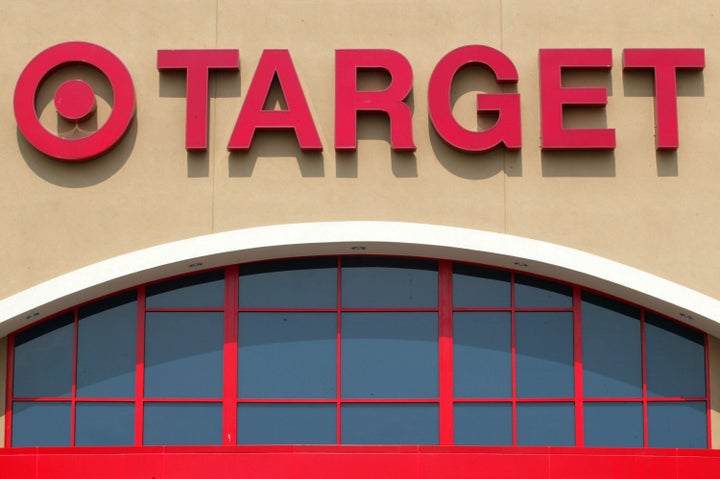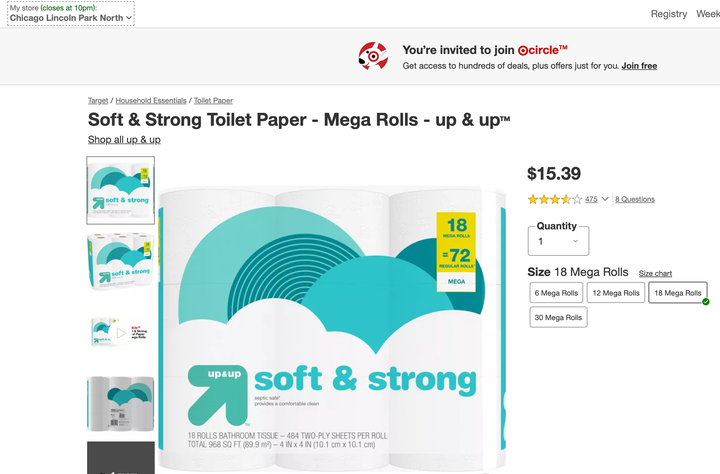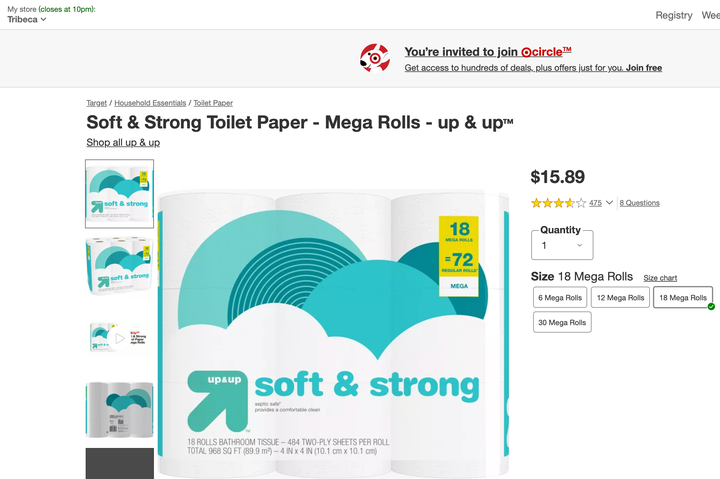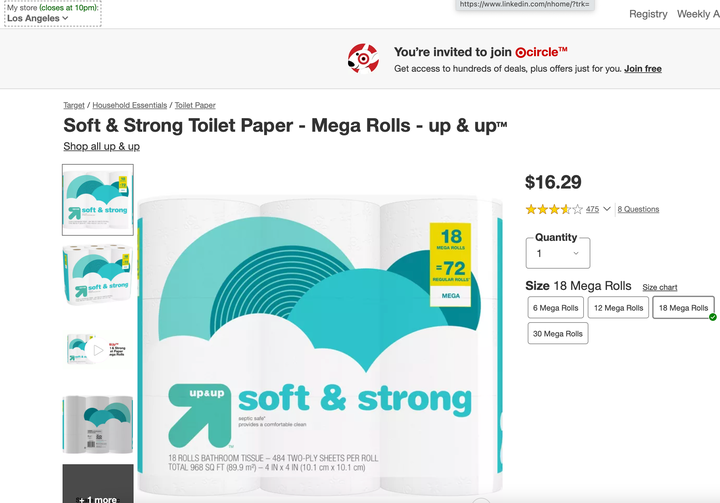
Fans of major retailer Target and its in-house brands are a group like no other. We consider shopping trips to the Bullseye Boutique a major weekend activity. Our closets are full of pieces from Wild Fable and JoyLab. Our cabinets are stocked with Up&Up and Market Pantry. You can only pry our Red Cards from our cold, dead hands.
But what may be news to Target’s rabid followers is that prices are sometimes higher depending on what location they’re shopping ― and even where a person is standing.
“The practice of changing prices based on time of day, demand or location is something we’ve seen done with many other retailers,” said money-saving expert Andrea Woroch. It’s a practice known as “dynamic pricing.” And although it may seem deceptive, it’s not illegal, Woroch said.
For example, Amazon changes its prices about every 10 minutes, even adjusting prices or offering additional promotions in the time between when a customer is adding a product to their cart and paying for it, according to the authors of the book “Swipe to Unlock: The Primer on Technology and Business Strategy.” As a result, Amazon has reportedly boosted its profits by 25%.
Pressured by the success of Amazon, other retailers have jumped on the dynamic pricing train. Walmart, for example, often offers lower prices online based on user behavior. It doesn’t offer price matching for in-store items that can be found cheaper online, but it does allow customers to order the less expensive products online and then pick them up in-store.
In other words, dynamic pricing is not unique to Target. Even so, Target customers who aren’t aware of this may end up paying more, not less, for products based on where they are physically located ― down to the parking lot.
In 2019, an investigation by KARE11 news, an NBC affiliate in Minneapolis, found that Target would change its prices based on whether app users were shopping from in or outside a store. In fact, after comparing prices on 10 different products, the station’s total bill was $262 cheaper when shopping from the back of the parking lot versus inside the Target store.
“Somebody at Target programmed in an algorithm which says someone who is 50 feet within the store is willing to pay more,” George John, a professor at the University of Minnesota Carlson School of Management Marketing, told KARE11. “The most reasonable explanation is that you just revealed your commitment to buying the product, you’re in the store, or in the parking lot. If you are further away, you haven’t quite committed, so I’m going to give you a juicier deal.”
But it’s not just whether you’re inside the store or shopping from home that impacts the price. Target also changes prices based on what city, suburb or other community you’re in.
Here’s an example. I visited the Target website and pulled up one of the hottest products of the last year: toilet paper. In the “my store” dropdown, I selected my location as a suburb of Chicago.
The price for an 18-pack of Target’s Up&Up brand of toilet paper was $15.39.

When I changed the location to a neighborhood in New York City, however, the price increased to $15.89.

And finally, when I changed the location to a store in my actual city of Los Angeles, the price again jumped, this time to $16.29.

Why Does Target Change Its Prices?
We reached out to Target to find out why prices may change depending on a shopper’s location.
“For online orders that are fulfilled by our stores, prices reflect the local market,” a spokesperson told HuffPost. “As always, we also offer guests the ability to price match through our Price Match Guarantee, providing added assurance they’re paying the lower price.”
In other words, Target adjusts its prices based on local economic factors and you may pay different prices even if you're shopping online, depending on where the order is being fulfilled from.
Woroch noted that you may notice prices are higher at stores in more expensive cities or areas where income is typically higher. “But Target and other online retailers can also track your location even when you’re shopping online or through the mobile app,” she said.
When you download the Target app, you are prompted to share your location, and many shoppers do so without thinking about how that will affect prices, Woroch said. “Target also analyzes your location based on your online shopping account and profile, based on previous orders and saved profile/address.”
Target fluctuates prices for a number of other reasons, too, Woroch said. Like John mentioned, the chain may charge more when you’re at the store because it figures you went there for the item regardless of the price, so it’s an opportunity to maximize sales and profits. On the flip side, Target may offer an online shopper a lower price in order to entice them to buy.
“It’s the same with offering coupons — there are some people who don’t search for coupons or may be buying something out of necessity regardless of whether it’s on sale or not. Meanwhile, there are some shoppers who will buy something just because it’s on sale and Target curates coupons for these types of shoppers,” Woroch said.
How To Save Money Shopping At Target
Even when I logged out of my Target account and pulled up their website using a private browser, the default location still showed my city. Clearly, Target knows where you are, even if you don’t want them to. That means you may have to pay slightly higher prices depending on where you live.
Even so, there are a few ways to prevent getting charged that extra amount.
Turn off your location: One simple way to make sure the Target app doesn’t change prices when you walk into the store is by turning off your location settings. To do this, open the app, click your name icon in the bottom right of the screen and scroll down to “app settings.” Then click “Location” and switch it to “Never.” The app should always show the online prices for products.
Take advantage of price matching: Once you have the online prices available in your app for comparison, be sure to request price matching on any products with higher price tags in the store. According to its policy, Target will “match the price if you buy a qualifying item at Target then find the identical item for less at Target.com, select online competitors, or in Target’s or competitor’s local print ad.” You can request a price match when you check out or within 14 days after the purchase.
Use in-app coupons: Whenever you shop in-store, check the Target app for any coupons for the items in your cart. “You can even use the app’s barcode scanner, which provides a quick list for each item and whether there’s a deal or not,” Woroch said. “I also run a quick online price comparison to see if other retailers have the same items and if they are sold for less, as Target will price match.”
Download a deal tracker: When shopping online, Woroch suggested adding a deal tracker such as Cently or Honey to your browser that will automatically search for, test and apply any coupons and cash back to your online order so you never miss out on savings (and you don’t have to do the work of testing different codes yourself).